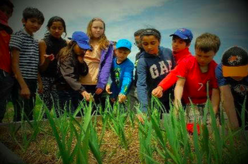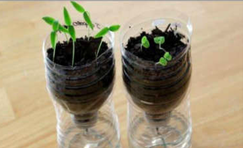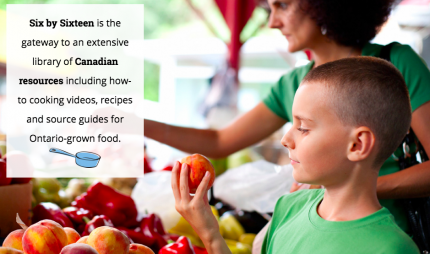A Q&A Lesson in Local Food Literacy: How can I deal with the mismatch between the growing season and the school year?
Posted: May 30, 2018
Categories: Edible Education Network / GoodFoodBites / News from Sustain Ontario / Schools
 With summer approaching and another school year about to come to an end, the next post in our Local Food Literacy blog series takes a look at a common dilemma teachers can face when trying to implement school growing initiatives…
With summer approaching and another school year about to come to an end, the next post in our Local Food Literacy blog series takes a look at a common dilemma teachers can face when trying to implement school growing initiatives…
Q: How can I deal with the mismatch between the growing season and the school year? In September I need to teach basic cooking and growing skills with new students but it’s also harvest time, which means there is a lot of high-skilled work to do in the kitchen and in the garden.
Explore growing during all seasons:
- You can do a lot inside. Indoor growing can work especially well for leafy greens and herbs. Sprouting in particular has a great turnaround. All you need is a south-facing, sunny window or simple grow-lights. (Tip: put out a call to your community for donations of grow lights.)
- Explore seeds and seed-saving; bridge this to talk about food sovereignty.
Connect clubs and class lessons to food systems, e.g. food miles, racism, social justice, food access.
Engage students in cooking, preserving, and tasting activities with local vegetables throughout the year:
- In the fall begin canning, pickling, and other food preservation.
- Link winter cooking to Indigenous foodways and how communities prepared traditional foods to survive the cold weather – drying, preserving, etc.
- Cook in the winter with root vegetables (cabbages, squash, sweet potatoes…)

An idea to get started with bringing the garden indoors:
– Build a sub-irrigated planter. People can stop by and say “ooh, what’s that?”
– Great DIY planter instructions and videos can be found by doing a search online.
Build Foodland Ontario’s availability guide into lessons year-round.
Start garden planning early and make it fun:
- Start planning for your spring garden at the beginning of the school year. Most schools say their garden project would have been more productive and manageable if they started earlier in the year.
- Make garden planning a class project that integrates multiple curriculum connections.
- Engage students as leaders to host creative planning charrettes with their peers, teachers, and parents.
- Take advantage of existing school events to generate interest in your garden project. For example, instead of a bake sale, consider raising money for your initiative by selling preserved goods.
- Visit other gardens (indoors / outdoors) as inspiration.
Brown Public School in Toronto, which you can read about here, had students plant vegetables and herbs in milk crates. Families then took the crates home for the summer to care for the plants and eat whatever ripened, and then they re-assembled the garden in the fall, during farm to school month!
Check out the following resources:
http://cog.ca/ottawa/guo-workshops-download/
Provides a wide range of curriculum-linked garden resources about all stages of school gardens – from Planning the Garden to Seed Saving.
 FoodShare’s Cooking and Tasting Toolkit
FoodShare’s Cooking and Tasting Toolkit
http://foodshare.net/ custom/uploads/2015/10/Toolkit_2013_ Cooking_Tasting.pdf
This toolkit shares learned lessons and tips and hints for cooking with children and youth.
 Six By Sixteen
Six By Sixteen
http://sixbysixteen.me/
Six By Sixteen shares how-to cooking videos, recipes and source guides for Ontario-grown food. Its goal: that young people can plan and prepare six nutritious, locally sourced meals by the time they are 16 years old.
If you have additional resources or ideas to share, please join the #LocalFoodLiteracy conversation on Twitter!
The above content comes from the Local Food Literacy in Schools FAQ Guide, developed by Sustain Ontario, Ecosource, FoodShare and Roots to Harvest.

One response to “A Q&A Lesson in Local Food Literacy: How can I deal with the mismatch between the growing season and the school year?”
Leave a Reply
You must be logged in to post a comment.


[…] How can I deal with the mismatch between the growing season and the school year? […]